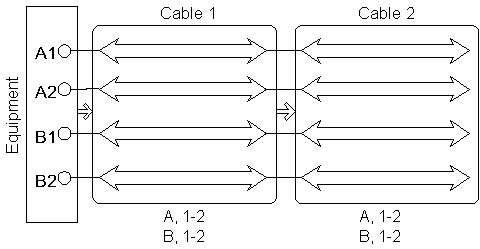
| Modeling the signal carrying paths within a telecommunications network poses unique challenges for a GIS based, facilities management system. Telcordia's Network Engineer 2.0 provides a telco FM system within ArcGIS 8.1, using a hybrid of standard ArcGIS network modeling and a custom network model, constructed within the ArcInfo Object Model, suited to managing the many signal carrying units in telco network facilities. The paper addresses merits and limitations of the ArcInfo Network Object Model and discusses Network Engineer's extensions of ArcGIS 8.1. The anticipated reader is an experienced developer of custom ArcGIS applications. |

| Figure 1. A single edge in NE's connectivity model relates the Equipment to Cable 1 and a second edge relates Cable 1 to Cable 2. The first edge represents connections between four consecutive ports on the Equipment and four consecutive pairs in Cable 1. The second edge represents connections between the four pairs in Cable 1 and the four pairs in Cable 2. |
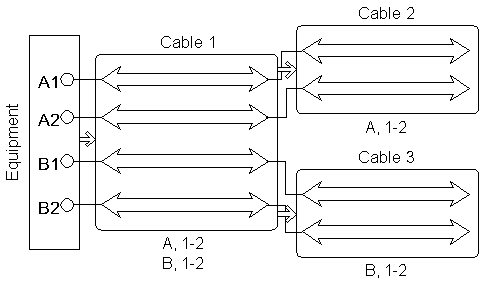
| Figure 2. The administrative label beneath Cable 2 indicates that the two pairs in the cable carry the signal from the first and second ports of the Equipment, labeled A1 and A2. The two pairs in Cable 3 carry the signal from the third and fourth ports of the Equipment, labeled B1 and B2. |
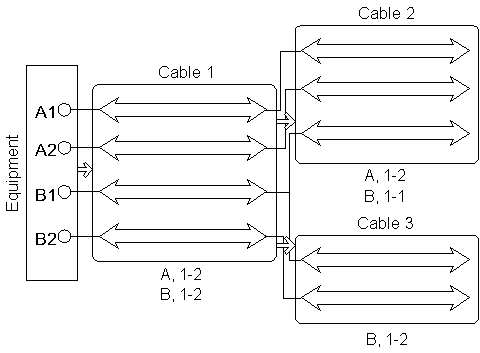
| Figure 3. The units of an administrative cable, or a single administrative unit, can follow divergent paths. |
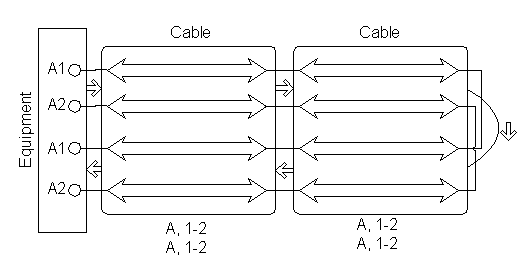
| Figure 4. Administrate cable A originates on the first and second ports of the Equipment and terminates on the third and fourth ports. |
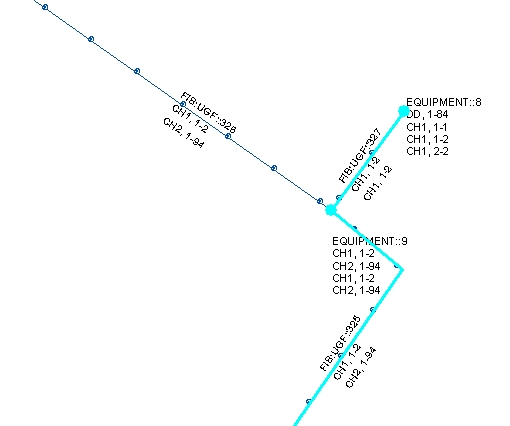 |
| Figure 5. ArcMap displays the result of Network Engineer's signal tracing. Unit 1 in administrative cable CH1 carries a signal from the cable FIB:UGF::325 to the unit's source, the 85th port on EQUIPMENT::8. |
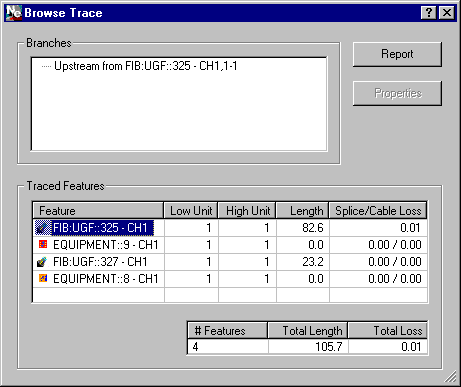
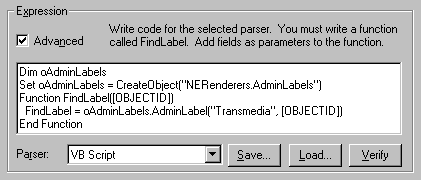 |
| Figure 7. Network Engineer 2.0.1 employs ArcMap's advanced labeling method to construct administrative labels on demand, eliminating the difficult task of reconciling conflicting versions of the labels. |